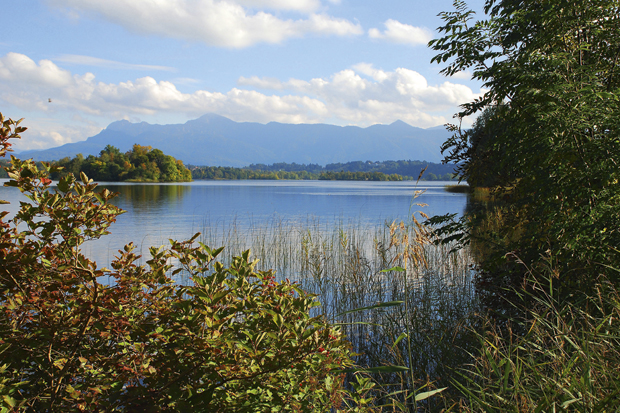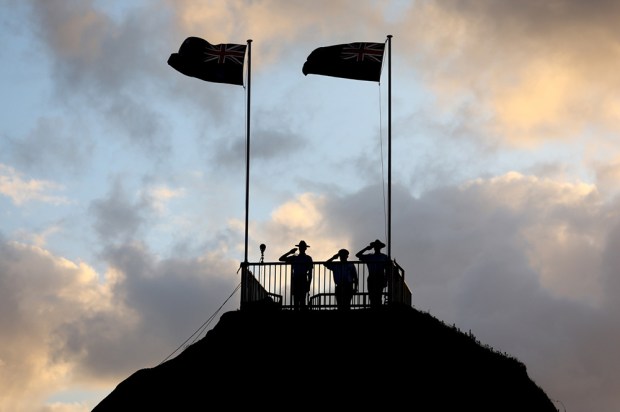Last October’s bushfires meant that 2013 was not a good year for the Blue Mountains. It should have been a year of celebration. However, unless you paid very close attention, you probably missed the fact that last year marked the 200th anniversary of one of the most momentous events in Australian history — the crossing of the Blue Mountains by Blaxland, Lawson and Wentworth. For 1813 should surely rank with 1788, 1901 and 1915 as one of the big years of Australian history. It was the year that opened up the interior of the continent to the development of key industries such as wool, wheat and mining.
Yet the only attempts to commemorate the crossing were almost all local and small scale. The only even moderately high profile effort was News Limited cartoonist Warren Brown retracing the route, which generated some press coverage. There were no new television programmes about it, although the National Film and Sound Archive did post an earlier documentary about the crossing on YouTube — it was made in 1965. This does seem rather sparse acknowledgement of such a momentous anniversary.
In the quarter century from the start of the first British Settlement at Sydney Cove in January 1788 until 1813, the colony of New South Wales had only expanded to other coastal locations such as the Hunter and Hobart. This was all about to change when on 11 May 1813 Gregory Blaxland, William Lawson and William Charles Wentworth set off from Blaxland’s property, south of what is now St Mary’s, to cross the Blue Mountains. Following a previous failed attempt, Blaxland had developed a strategy to follow the ridges, rather than the valleys, and the felicitous choice of route is reflected in the fact that the Great Western Highway and main western railway still largely follow it.
Another clever feature of their journey was to treat every stage as a two-day process. On the first day, the bulk of the party would set off, leaving horses and supplies behind and then, having navigated their way through the bush for a few miles, the advance party would turn back and cut a wider path for the horses to follow the next day. After three weeks of this repeated process, they had covered about 50 miles and had succeeded in reaching the top of the Divide. From the top of what became known as Mount Blaxland, the explorers could see what looked like potentially prosperous country stretching away to the west.
By the end of 1813 the colony’s Surveyor-General George Evans, under instructions from Governor Lachlan Macquarie, had followed their route and surveyed some of the plain to the west. Within two years, Macquarie himself had travelled across the mountains and founded the town of Bathurst.
This flurry of postcrossing activity tends to undermine the argument of emeritus Sydney University history professor Richard Waterhouse that the explorers’ contemporaries did not share the modern view of the importance of crossing the mountains. Waterhouse was quoted as saying that ‘the report of the successful Blaxland crossing in the Sydney Gazette in 1813 amounted to one paragraph — a similar size to an article on a cockfight.’ No doubt many 1813 Sydneysiders, just like their 2013 successors, wanted to read about sport rather than hard news, but Macquarie clearly understood the significance of the discovery.
Waterhouse is far from alone among modern historians in downplaying the importance of Blaxland, Lawson and Wentworth. Indeed, in recent decades, it has become something of a fashion to sneer at what one writer has referred to as ‘the most hackneyed event in Australian history’. One line of attack has been to question whether Blaxland, Lawson and Wentworth were actually the first settlers to cross the mountains. From the early days of Sydney town, escaped convicts and other adventurers had sought ways to scale them, most being turned back when the valleys they followed ended in sheer rock faces. Some have argued that one John Wilson crossed in 1798, but the evidence is not convincing. Certainly, in 1802, the Frenchman Francis Louis Barrallier got within a day’s walk of the top of the Great Divide, before a lack of provisions forced him and his party to turn back. There was also the botanist George Caley who regularly visited the mountains to collect specimens, but there is no evidence that he got much beyond the eastern foothills.
There are other reasons why the journey of Blaxland, Lawson and Wentworth has come to be seen as more problematic by recent generations. For decades, people have been deserting Australia’s interior and resettling on the coastal fringe which has reduced our collective empathy with, and understanding of, the importance of what goes on beyond the Divide.
Further, where once opening up the interior was seen as unarguably good and progressive, in recent times this has been balanced against the negative impact that this had on the indigenous occupants of those grasslands. Yet the fact that crossing the Divide magnified several times over the impact of British settlement on Aboriginal Australians only adds to the significance of what Blaxland, Lawson and Wentworth achieved. From 1813 onwards, the whole Australian continent, not just the coastal fringe, became available for settlement. This completely changed the economic development of Australia and fundamentally altered the lives of many generations of settler and indigenous Australians.
Geoffrey Blainey pointed out in The Tyranny of Distance that, in earlier years, colonists had no great practical incentive to explore the interior, which he argued was more significant than the mountains’ impenetrability in delaying a crossing. However, with the coastal plain becoming more crowded, that was changing in the 1810s. If Blaxland, Lawson and Wentworth had not crossed the Blue Mountains in 1813, some other explorers would have done so in the ensuing years. Whoever did it, and whenever it occurred, it was always going to be a landmark event.
Perhaps when John Dunmore Lang argued in the 1850s that ‘the passes of the Blue Mountains are like the Straits of Thermopylae and could be defended by a mere handful of Australian Greeks against the whole power of Persia,’ he was guilty of overstating their impenetrability and significance. In 2013, we did the opposite.
Got something to add? Join the discussion and comment below.
Get 10 issues for just $10
Subscribe to The Spectator Australia today for the next 10 magazine issues, plus full online access, for just $10.
Richard Allsop is a research fellow at the Institute of Public Affairs.
You might disagree with half of it, but you’ll enjoy reading all of it. Try your first month for free, then just $2 a week for the remainder of your first year.














Comments
Don't miss out
Join the conversation with other Spectator Australia readers. Subscribe to leave a comment.
SUBSCRIBEAlready a subscriber? Log in